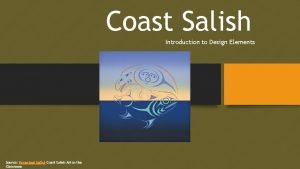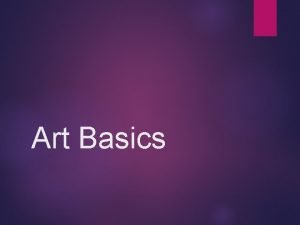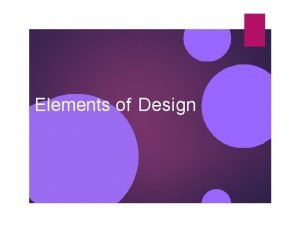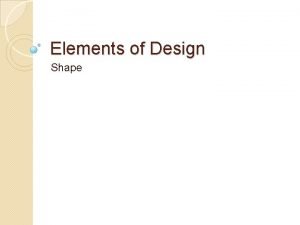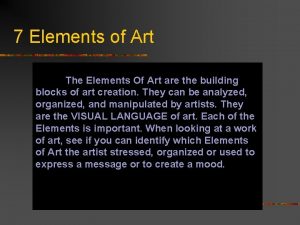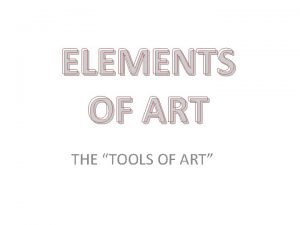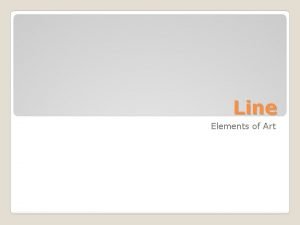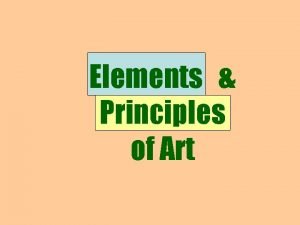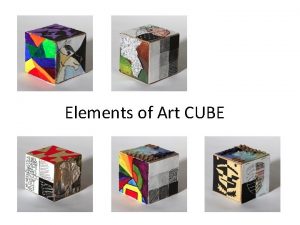Media Art Design Notes The Elements of Art









- Slides: 9

Media Art Design Notes: The Elements of Art Mr. Torres

Elements of Art • The Elements of Art are the basic components used by an artist when producing works of art. • The Elements of Art include line, shape, value, texture, and color.

Line • A line is a point moving in space. • Line quality can vary in lightness, darkness, width, length, curvature, color, or direction. • Line direction may be horizontal, vertical, or diagonal.

Shape • A shape is a two dimensional area that is contained by a line. • When a line overlaps itself it creates a shape. • A shape may be geometric or organic. • A geometric shape has a precise formula and looks as if it was created by a drawing instrument. • An organic shape is a curvy and irregular free form shape that looks like it is derived from nature and drawn by hand.

Shape • Geometric Shapes • Organic Shapes

Color • The visual sensation dependent on the reflection or absorption of light from a given surface. • The three characteristics of color are hue, value, and intensity.

Hue & Intensity • The word “Hue” refers to the name of a color (for example: the color is red, blue, yellow, or orange). • Intensity is the brightness or dullness of a color.

Value • Value is the lightness or darkness of a color. • A gradient is a value scale that shows the range of values from black to white. • High values are light. • Low values are dark. High Value Low Value

Texture • Texture is the surface quality of materials, either actual (tactile) or implied (visual). • Visual Texture is the experience of texture through the sense of sight. • Texture is an Element of Art • These are examples of Visual Texture: White Marble Oak Water Droplets
